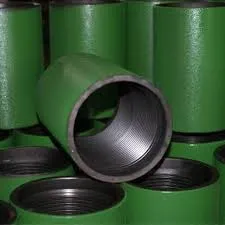- Afrikaans
- Albanian
- Amharic
- Arabic
- Armenian
- Azerbaijani
- Basque
- Belarusian
- Bengali
- Bosnian
- Bulgarian
- Catalan
- Cebuano
- Corsican
- Croatian
- Czech
- Danish
- Dutch
- English
- Esperanto
- Estonian
- Finnish
- French
- Frisian
- Galician
- Georgian
- German
- Greek
- Gujarati
- Haitian Creole
- hausa
- hawaiian
- Hebrew
- Hindi
- Miao
- Hungarian
- Icelandic
- igbo
- Indonesian
- irish
- Italian
- Japanese
- Javanese
- Kannada
- kazakh
- Khmer
- Rwandese
- Korean
- Kurdish
- Kyrgyz
- Lao
- Latin
- Latvian
- Lithuanian
- Luxembourgish
- Macedonian
- Malgashi
- Malay
- Malayalam
- Maltese
- Maori
- Marathi
- Mongolian
- Myanmar
- Nepali
- Norwegian
- Norwegian
- Occitan
- Pashto
- Persian
- Polish
- Portuguese
- Punjabi
- Romanian
- Russian
- Samoan
- Scottish Gaelic
- Serbian
- Sesotho
- Shona
- Sindhi
- Sinhala
- Slovak
- Slovenian
- Somali
- Spanish
- Sundanese
- Swahili
- Swedish
- Tagalog
- Tajik
- Tamil
- Tatar
- Telugu
- Thai
- Turkish
- Turkmen
- Ukrainian
- Urdu
- Uighur
- Uzbek
- Vietnamese
- Welsh
- Bantu
- Yiddish
- Yoruba
- Zulu
Understanding Well Casing Couplings and Their Importance in Oil and Gas Drilling
Understanding Well Casing Couplings An Integral Component in Oil and Gas Operations
In the oil and gas industry, well casing is an essential element that ensures the integrity and safety of drilling operations. Among the critical aspects of well casing are the couplings, which play a pivotal role in connecting individual casing strings. This article explores the significance, types, and manufacturing processes of well casing couplings.
What is Well Casing?
Well casing refers to the series of pipes inserted into a newly drilled well to provide support to the well walls, prevent contamination of freshwater resources, and orchestrate the safe extraction of oil and gas. The well casing acts as a barrier between the wellbore and surrounding subterranean formations, ensuring that hydrocarbons can be extracted efficiently while protecting the environment.
The Role of Couplings in Well Casing
Couplings are short pipe lengths that connect casing pipes. They ensure that the casing string can be joined together, which is crucial for maintaining the structural integrity of the well. The primary function of a coupling is to provide a strong, leak-proof connection that can withstand both internal and external pressures during drilling and production operations. Poorly designed or manufactured couplings can lead to significant risks, including well blowouts, loss of integrity, and environmental contamination.
Types of Well Casing Couplings
Couplings come in various designs, each tailored to specific operational requirements. The most common types include
1. Threaded Couplings These couplings have threads at both ends, allowing them to screw onto the casing pipes. They are widely used due to their ease of installation and disassembly.
2. Welded Couplings Used primarily in high-pressure environments, these couplings are welded onto the casing pipes, providing a robust and permanent connection. They are often used in offshore drilling operations.
well casing coupling

4. Slip-on Couplings These couplings slide over the pipe ends and are fastened with bolts or screws. They are often used for temporary connections or quick repairs.
Each coupling type serves specific functions based on the well's operational environment and the type of casing being used.
Manufacturing and Material Considerations
The manufacturing process of well casing couplings involves precise engineering to ensure they can withstand the extreme conditions often found in subsurface environments. Materials used in couplings typically include carbon steel, alloy steel, and stainless steel, each selected for their unique properties. Carbon steel is the most common material, offering good strength and toughness, while alloy steels provide enhanced strength and resistance to corrosive environments.
During production, couplings undergo rigorous quality control measures, including tensile and impact testing, to ensure that they meet industry standards such as API (American Petroleum Institute) specifications. These standards are crucial to guaranteeing the performance and safety of the couplings during operations.
Challenges in Coupling Selection
Selecting the appropriate coupling is vital for the success of any drilling operation. Engineers must consider factors such as the well’s depth, pressure, temperature, and environmental conditions. Additionally, economic considerations may influence the choice of couplings, balancing cost-effectiveness with safety and reliability.
Conclusion
Well casing couplings are indispensable components of oil and gas drilling operations, ensuring that wells can be drilled safely and efficiently. Their design and construction must be approached with precision and care, as they play a vital role in maintaining well integrity and preventing environmental hazards. As the industry continues to innovate and face new challenges, the development of advanced materials and coupling technologies will remain critical in enhancing the safety and efficiency of oil and gas operations. Understanding the intricacies of well casing couplings not only aids in selecting the right components but also contributes to the overall success of drilling projects globally.
-
Tubing Pup Joints: Essential Components for Oil and Gas OperationsNewsJul.10,2025
-
Pup Joints: Essential Components for Reliable Drilling OperationsNewsJul.10,2025
-
Pipe Couplings: Connecting Your World EfficientlyNewsJul.10,2025
-
Mastering Oilfield Operations with Quality Tubing and CasingNewsJul.10,2025
-
High-Quality Casing Couplings for Every NeedNewsJul.10,2025
-
Boost Your Drilling Efficiency with Premium Crossover Tools & Seating NipplesNewsJul.10,2025







